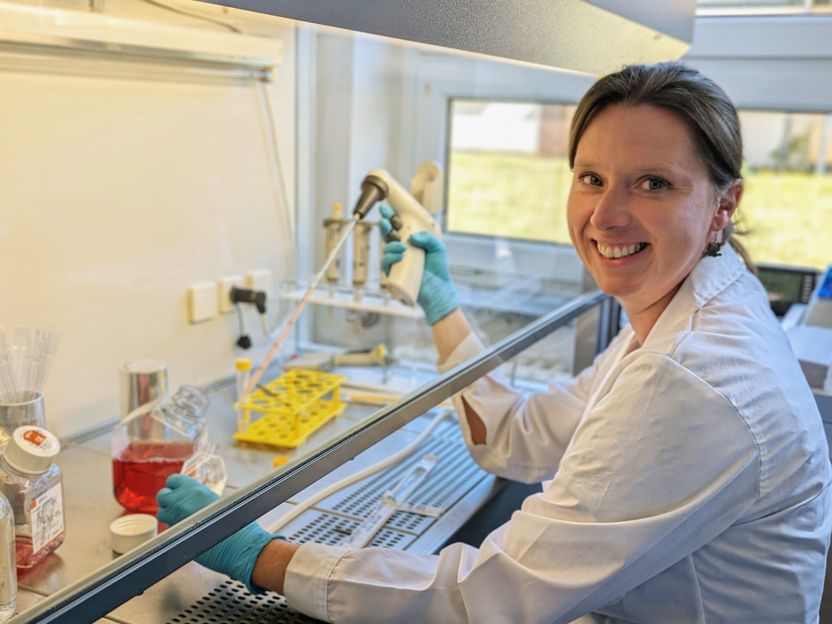Pathogens in food: Progress and new challenges for zoonosis control
About 200 experts met at the BfR to discuss new scientific insights into how to prevent food-borne infections
In early summer 2011, EHEC in raw sprouts made headlines in Germany, followed by headlines about a norovirus found on frozen strawberries in autumn 2012. These two major outbreaks again alerted the public to the significance of illnesses transmitted via food. "Although we are observing a decrease in the number of cases of food-borne infections, we must nevertheless continue work to ensure consistent and effective zoonosis control", says Professor Dr. Dr. Andreas Hensel, President of the Federal Institute for Risk Assessment (BfR).
From 12 to 14 November 2012, more than 200 scientists discussed the latest insights and developments in the field. The experts identified a need for action in the area of consistent compliance with and control of hygiene measures, the development of diagnostic methods, improvement of instruments to investigate national outbreaks and extension of the zoonosis monitoring programme.
In Germany, infections via food are caused predominantly by the bacteria campylobacter and salmonella. The decrease in salmonella infections is a particularly clear example of successful zoonosis control: Control measures in livestock production have, within five years, led to a reduction from about 55,000 to below 25,000 infections per year. Infections with campylobacter, however, continue to be the most frequent zoonotic infections affecting humans, and so far, no decrease in the number of infections can be observed.
Apart from illness caused by bacteria, infections caused by the norovirus and rotaviurs play an important role in Germany. Nevertheless, there is still a lack of important insights into their transmission paths, tenacity and inactivation. Even reports of cases of illness caused by the less extensively investigated zoonotic hepatitis E virus are steadily increasing. In addition, due to the ever growing global food trade, viruses are to be expected which have so far only played a minor role in food contamination in Germany.
The speakers and participants of the event emphasised the significance of hygiene, especially cleaning and disinfection measures in controlling a wide variety of zoonotic pathogens. It is also important in this context to critically monitor the effectiveness of the measures taken: Apart from intensive control measures for important pathogens such as salmonella and campylobacter at all levels of the food chain, rare combinations of pathogens and food must be taken into account as a potential hazard as well. Various recent outbreaks have shown that pathogens can be spread via plant-based food too.
Progress is currently being made in the development of diagnostic methods for detecting pathogens. However, this brings new challenges: Analysing the entire genome of a pathogen is now easy technically, and it provides detailed knowledge of the properties of the pathogens and genetic mutations. At the same time, however, these analytical tools also raise questions regarding the interpretation of the generated data. For example, pathogens are capable of changing their properties or to establish themselves in other habitats such as plants. This means that the methods used for diagnostics and epidemiology must be constantly improved further and adapted to suit specific problems.
Extended possibilities of data recording and data management as well as developing new simulation methods permit improved and quicker risk assessment. The new epidemiological and diagnostic possibilities continually improve the process of assigning infections to a source and assessing the risk posed by specific pathogens. A basic requirement for this is the current overview of the frequency and properties of pathogens in various food chains as provided by the zoonosis monitoring programme. This results in the demand to extend monitoring activities further.
The analysis of supply chains of food stuffs played a central role in explaining major food borne outbreaks. The combination of diagnostics in highly specialised laboratories and IT-assisted epidemiological investigations of the type available at the BfR play an important role when trying to find the causes of outbreaks. In view of the complex transport routes and trade relations, a need for improved instruments for the purpose of retracing ingredients has been identified, however.
The discussions held during the event have shown that the important pillars of the measures for consistent zoonosis control are still consumer education, hygiene and monitoring the food chain. The crucial factor in improving zoonosis control is to make new scientific insights usable and to continuously adjust the control measures to these new insights.






















































